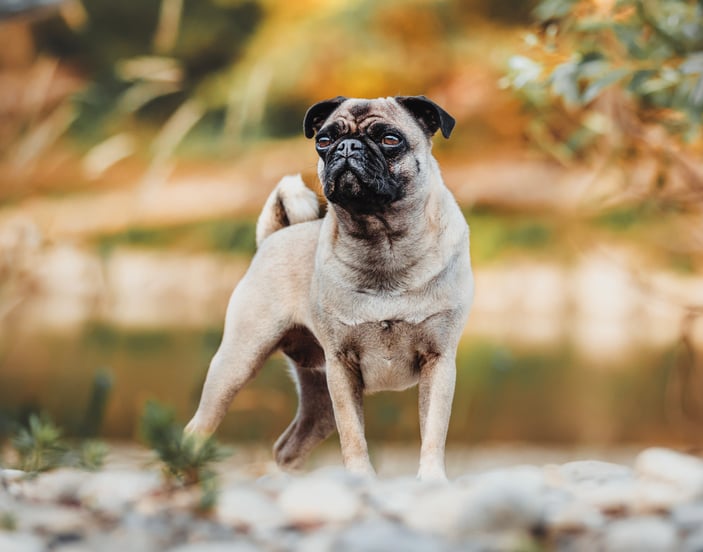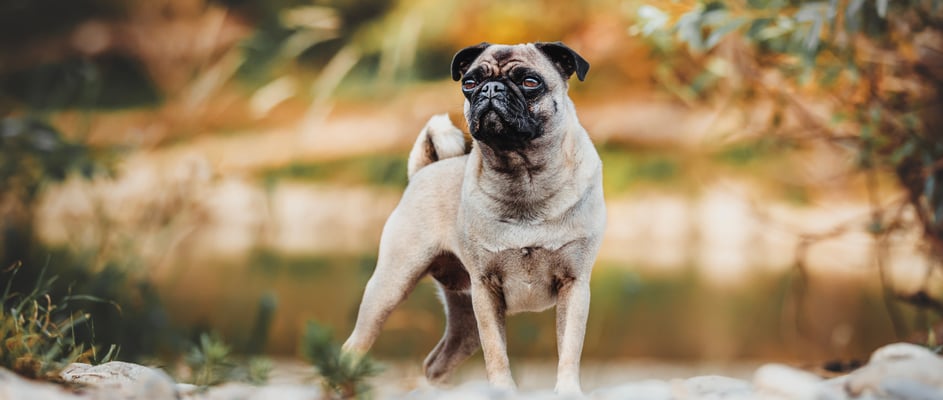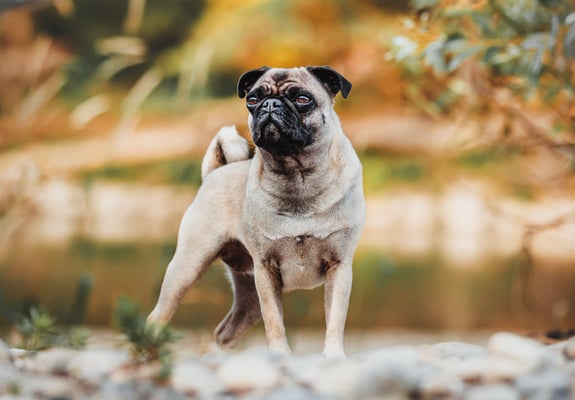The guide to owning a Pug.
Want to know everything there is to know about finding the right dog for you? Submit your email below, and we’ll send you a one-stop guide to help you on your pet-ownership journey.
Jump to:
Stats at a glance.
History of the Pug.
Let’s talk about the Pug, an ancient breed of flat-faced, sometimes mischievous companions.
Pugs were bred thousands of years ago, with many historians tracing their origins to China (hence the term Chinese Pug in some circles).
They were bred to be companions for emperors, with their compact, wrinkly faces symbolising good fortune. Those skin folds are more than just adorable – they once carried cultural importance in Chinese palaces.
Later, Dutch traders brought Pugs and French Bulldogs to Europe. In the 16th century, the House of Orange in the Netherlands used them as the official breed of royalty.
By the time William III and Mary II ascended the English throne in the late 17th century, Pugs had secured royal admirers across Europe.
Legend even says King George V and King Edward VIII owned Pugs, adding to the breed’s regal history.
Over the centuries, they’ve become one of the more cherished dog breeds worldwide.
From ancient palaces to modern living rooms, these little dogs have captured hearts and found devoted fans around the world.
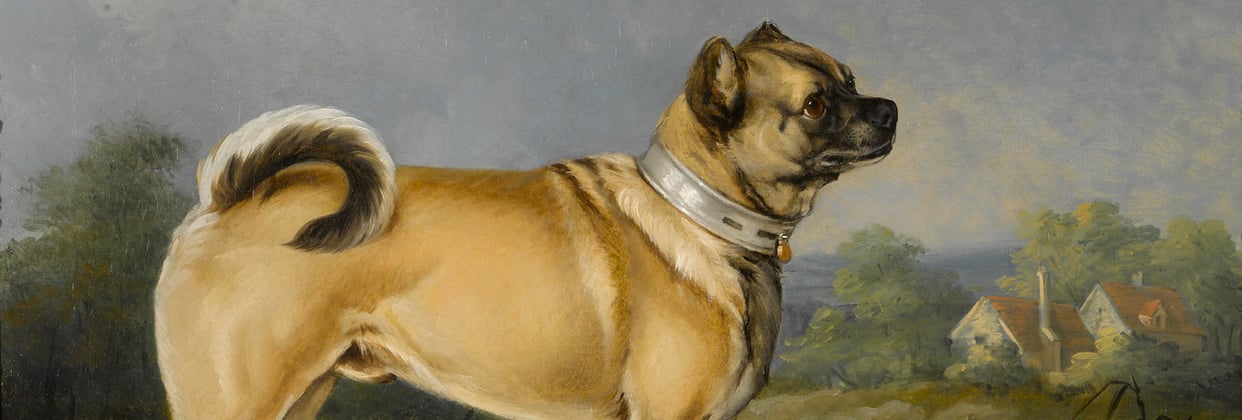

How much is a Pug puppy (UK)?
If you want a Pug, you’ll likely be wondering about costs. In the UK, a Pug puppy often ranges between £600 and £1,200.
Prices can vary based on breeder reputation, pedigree, and location.
What to look for in a reputable breeder
They allow you to meet both parents for a sense of Pug’s temperament.
They provide health certificates, including checks for brachycephalic airway syndrome and other health problems.
They ask you questions, too, ensuring you understand owning a Pug.
They emphasise the overall health of the pup over profits.
Remember: If you’re keen on adopting, you can also explore rescue organisations dedicated to Pugs. Giving a cute Pug a second chance might be the best decision you ever make.
Colours and coat types.
Pugs are known for their signature fawn or black coats, though rarer colours (like silver or apricot) do exist.
Their coat is short, smooth, and easy to care for, although it tends to shed more than you’d expect for such small dogs.
Fawn – The classic beige or tan shade, often paired with a black mask on the nose and ears.
Black – Sleek and shiny, though still the same compact shape and cobby build.
Apricot – Similar to fawn but with a warm, peachy tone.
Silver – A lighter, less common variation that can turn heads.
Regardless of hue, Pugs are considered one of the most adorable Pug varieties because of their wrinkle patterns and playful expressions.





Size and weight.
How big does a Pug get?
Height: 25-36cm at the shoulder
Weight: 6-8 kg
Build: Stocky and muscular despite their small frame
Pugs are a small breed of dog and generally square in outline with a rounded head. Their roly-poly physique often conceals big personalities that defy their petite stature.
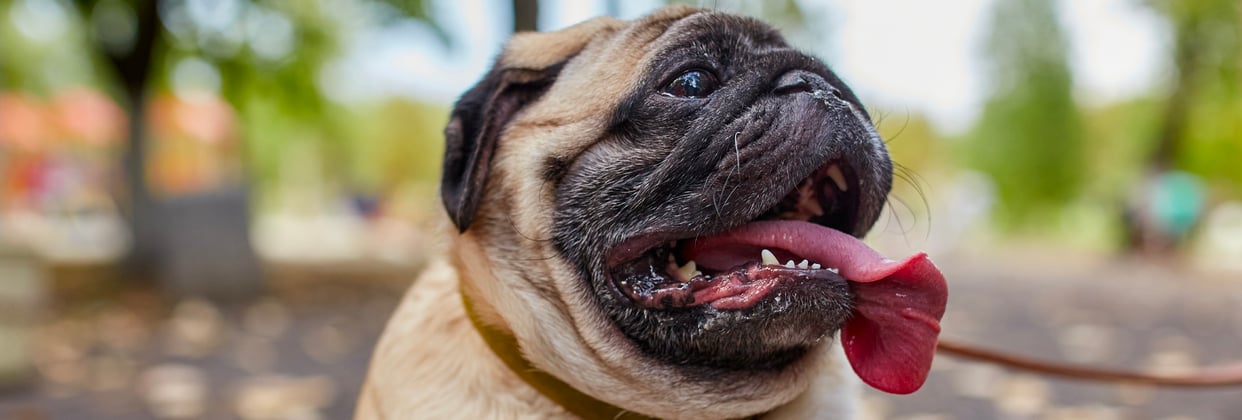

Temperament and behaviour.
Pugs make great family dogs because they’re affectionate, cheerful, and love to be the centre of attention. Many Pug owners describe them as playful yet calm enough for indoor life.
Key personality traits:
Eager to please: While sometimes stubborn, most Pugs respond well to gentle guidance.
Sociable: They tend to bond deeply with their humans, even clinging to them like little shadows.
Good with children: They’re a nice breed for families, provided kids handle them carefully.
Clownish: A Pug’s comedic side often emerges in playtime, where they prance around with silly charm.
If you’re looking for a dog that’s fun to train but not overly high energy, a Pug might be your perfect match.
You can also read our ‘Best Dog Breeds for First-Time Owners’ article to see if they fit your lifestyle.
Are Pugs good with other pets?
Yes, especially if they’re introduced early. Pugs are also known for being fairly laid-back with cats or fellow canines. Still, supervision is wise, especially for small dogs that can be inadvertently roughhoused by bigger breeds.
Do Pugs suffer from separation anxiety?
They love company and can become anxious if left alone for long periods. If your schedule means many hours away, consider dog walking services, daycare, or a second pup for companionship. For more guidance, see our separation anxiety blog post.
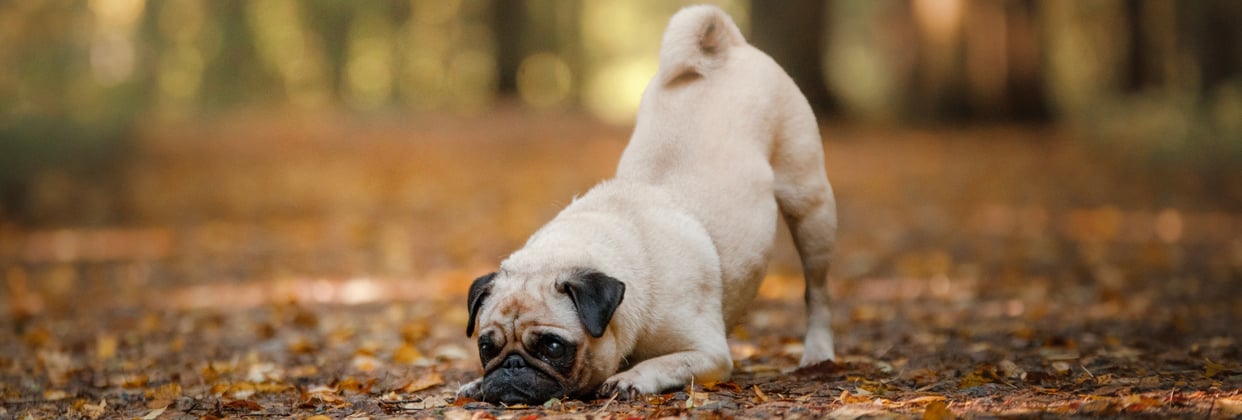

Temperament around children
Pugs make great family pets because they’re quite good with children. They rarely snap unless cornered or frightened.
Still, teach youngsters to handle them gently – a stubby tail or short muzzle can be tender if tugged.
If your child is especially energetic, you might want to plan supervised interactions.
Pugs love playing but have limited stamina. A relaxed afternoon snuggle can be just as affectionate.
Living with a Pug
Are Pugs apartment-friendly?
Yes. Thanks to their moderate exercise needs and friendly disposition, they adjust well to smaller homes.
Just be sure you provide mental stimulation and avoid prolonged steps or slopes that stress their joints.
Potential for mischief
Pugs may rummage through bins if bored or hungry. Big personalities often lead them to comedic trouble, so keep an eye on the rubbish or your favourite slippers!
Training a Pug.
Training Pugs is usually a delight because Pugs are generally easy to train thanks to their love of treats and desire to please.
That said, they’re prone to occasional stubborn streaks, so patience is your friend.
Tips for success:
Keep sessions short: Ten minutes of practice a few times a day works wonders.
Use positive reinforcement: Treats, praise, and gentle pats.
Be consistent: Use the same cues and rewards.
Socialise early: Introduce them to various sights, sounds, and people.
Mindful of health: If your Pug starts panting excessively or showing breathing difficulties, pause the session.
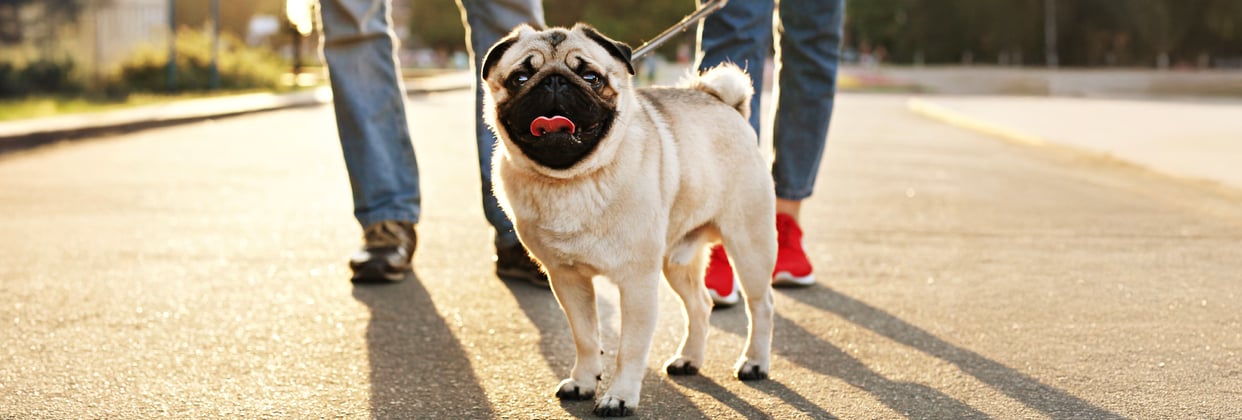

Shedding and grooming.
Though small, Pugs shed a surprising amount. Their coat is short but dense, and regular grooming helps keep hair off your clothes and furniture.
How often should you brush your Pug’s coat?
At least once or twice a week with a soft bristle or rubber curry brush. This gets rid of loose fur and helps distribute natural oils for a shiny coat.
Skin folds:
Focus on the skin around their face – those wrinkles can trap dirt, moisture, and bacteria. Clean them gently with damp cotton pads, then dry thoroughly to avoid infections.
If left unattended, these folds can lead to health problems, especially around the nose.
Bathing:
Schedule baths every month or two, or when they’re particularly smelly. Use a mild dog shampoo. Over-bathing can lead to dry skin, so moderate the frequency.
Need pointers on safe washing? Our 'How to Bathe a Dog' article walks you through each step.
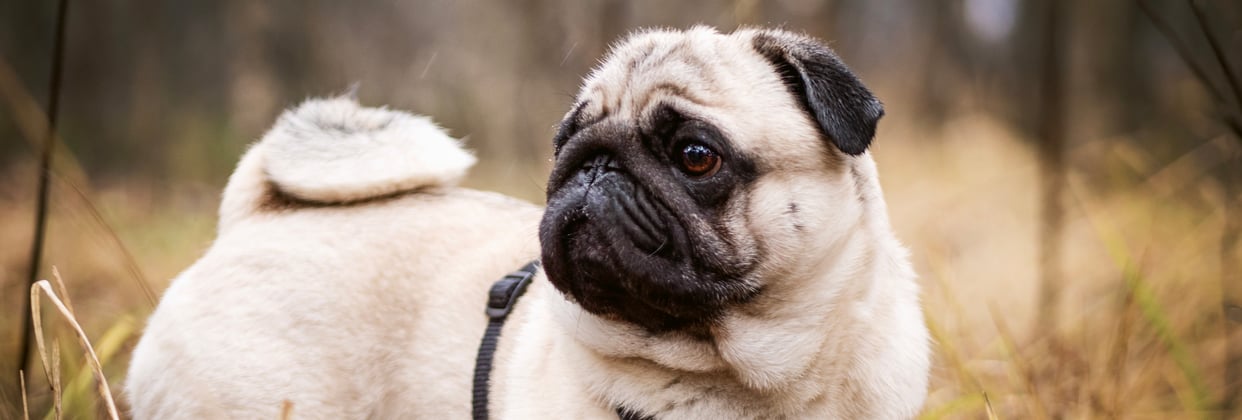

Exercise needs.
Pugs are playful but not marathon runners. They typically need around 15-30 minutes.
A few short walks and some indoor playtime usually suffice. Over-exertion can exacerbate brachycephalic issues, including breathing problems.
Activities pugs enjoy:
Gentle walks: Twice a day for 10-15 minutes each.
Puzzle toys: They love sniffing out treats in interactive feeders.
Low-energy fetch: Keep the distance short and watch for any wheezing.
Short training games: Reinforce commands while keeping them engaged.
Be mindful of high temperatures. Pugs are prone to heatstroke due to their flat face (part of brachycephalic obstructive airway syndrome). On hot days, walk during cooler hours and offer plenty of water.
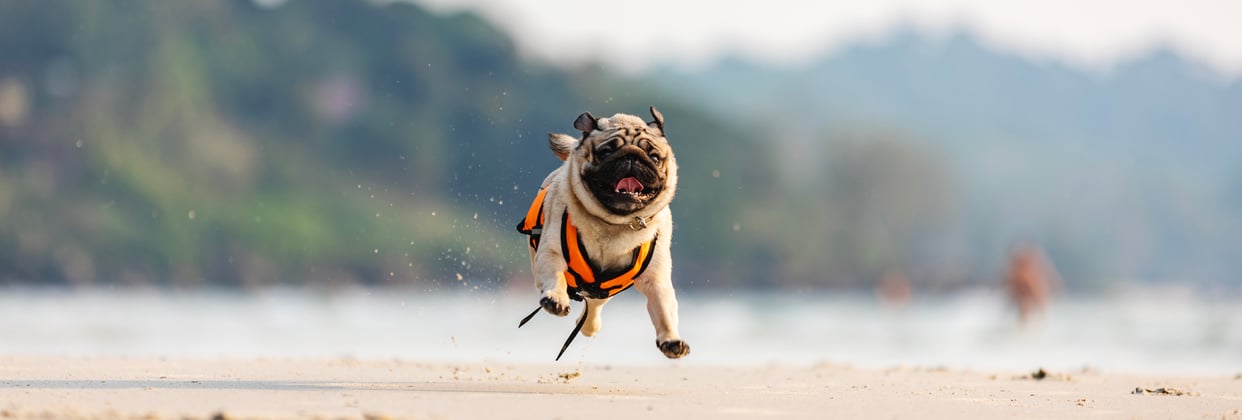

Feeding and nutrition.
Because Pugs are generally greedy eaters, portion control is vital. They’re prone to obesity if allowed to free-feed or eat table scraps all day.
Daily feeding guidelines:
Dry kibble: 1/2 to 1 cup per day, depending on age, size, and activity levels.
Split into two meals: Breakfast and dinner help maintain steady energy.
Healthy treats: Crunchy vegetables or specially formulated dog treats in moderation.
Need tips on budget-friendly feeding? Our ‘Saving Money on Your Dog Care’ blog post offers a range of ideas to keep your Pug dog breed happy and healthy without overspending.
Common health issues in Pugs.
Pug health can be complex due to their brachycephalic anatomy and flat-faced features. Let’s explore potential health concerns.
Note: Costs are approximate and can vary based on location and specific veterinary practices.
Owners should consider frequent check-ups. Journals of veterinary studies also highlight how Pugs are prone to multiple conditions, so watch for warning signs early.
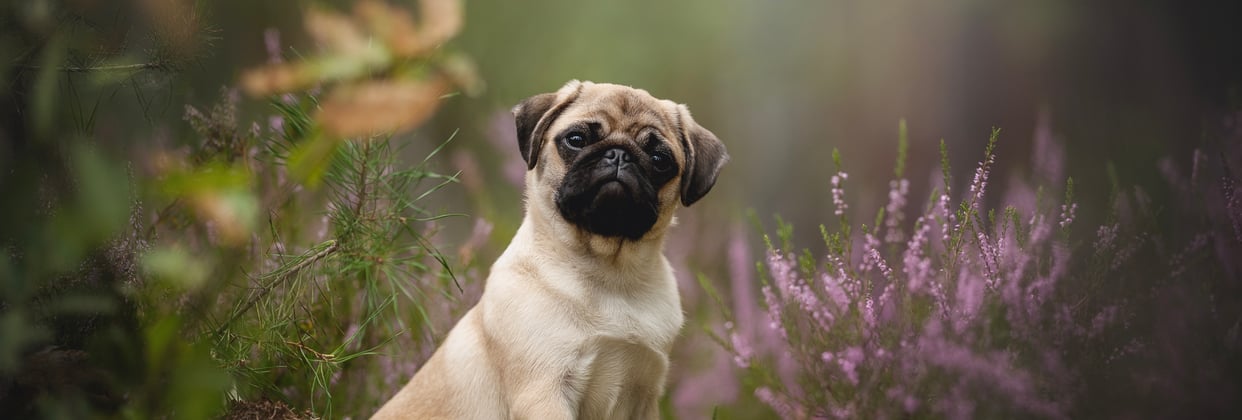

How much exercise does a Pug need?
Typically, 15-30 minutes a day is enough. That could be two short walks or one longer stroll.
Avoid intense workouts – Pugs are considered a brachycephalic breed of dog with limited airway capacity.
Overdoing it might aggravate brachycephalic airway syndrome and raise the risk of heatstroke.
Try mental games instead of rigorous runs. Puzzle toys, hide-and-seek with treats, and gentle fetch all help keep them fit without stressing their respiration.
Pug lifespan and ongoing care
Pug lifespan averages 12-15 years, but some live longer with attentive care. Follow these tips to maximise longevity:
Routine vet visits: At least once a year, or twice for seniors.
Weight management: Keep them trim to ease pressure on joints and reduce breathing strain.
Wrinkle care: Regular cleaning prevents infections.
Dental hygiene: Brush teeth a few times weekly; dental checks are vital.
Watch for changes: Snorting more than usual? Moving less? Trust your instincts and see your vet.
The goal is a happy and healthy companion for all their golden years.
Pet insurance for Pugs.
With the serious health risks linked to brachycephalic faces, investing in pet insurance can be a lifesaver – financially and emotionally.
Surgeries for obstructive airway issues or Pug dog encephalitis testing can be costly.
At Waggel, we offer:
Lifetime coverage: For chronic conditions like dry eye or PDE.
24/7 online vet access: As well as money savings through our vet triage service.
Free behaviour and nutrition consultations: Ideal for addressing problems like obesity or separation anxiety.
Easy claims process: Done in minutes online.
Ready to safeguard your Pug? Get your free quote and join our community. Because while Pugs make great family companions, protecting them from hefty bills offers priceless peace of mind.
